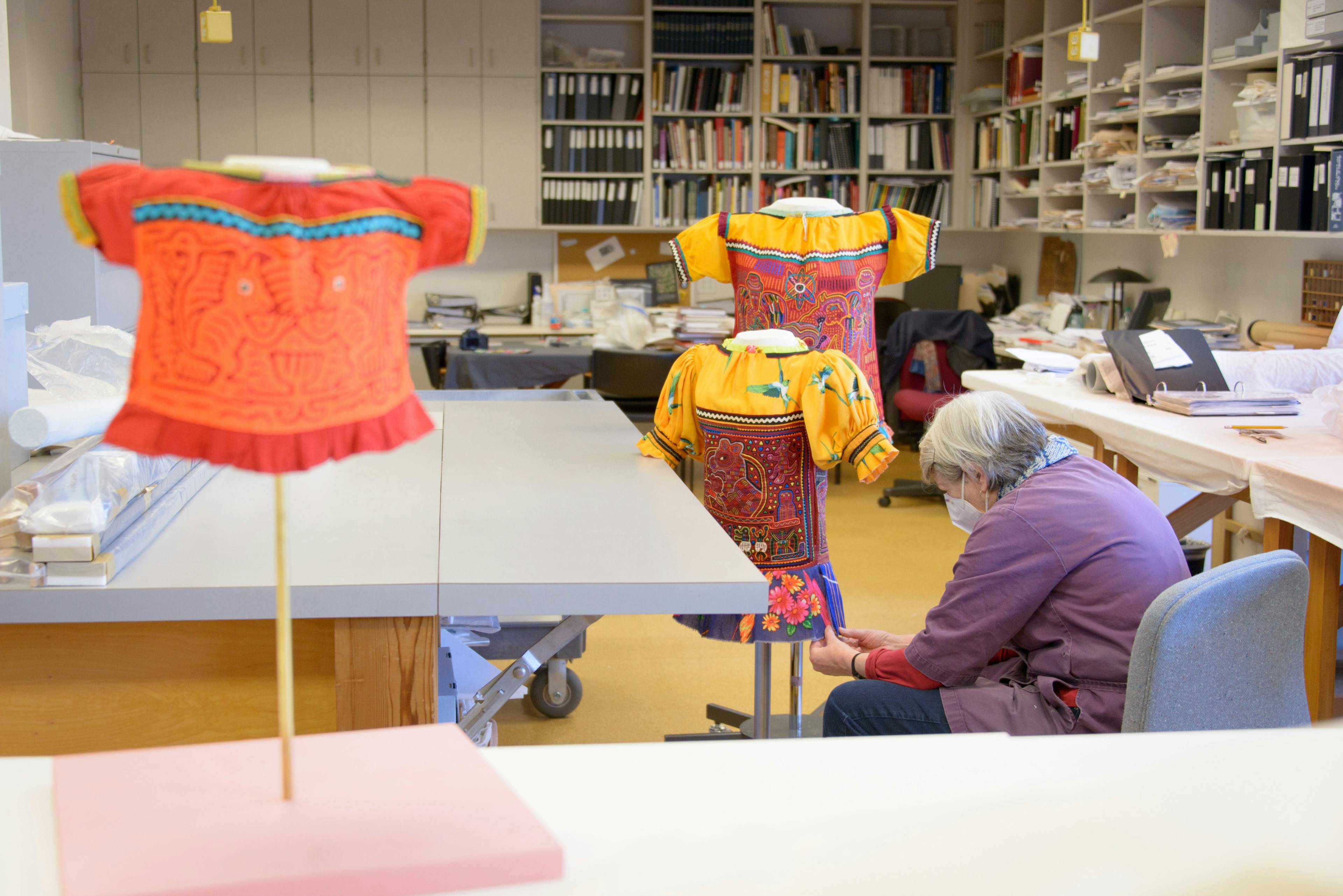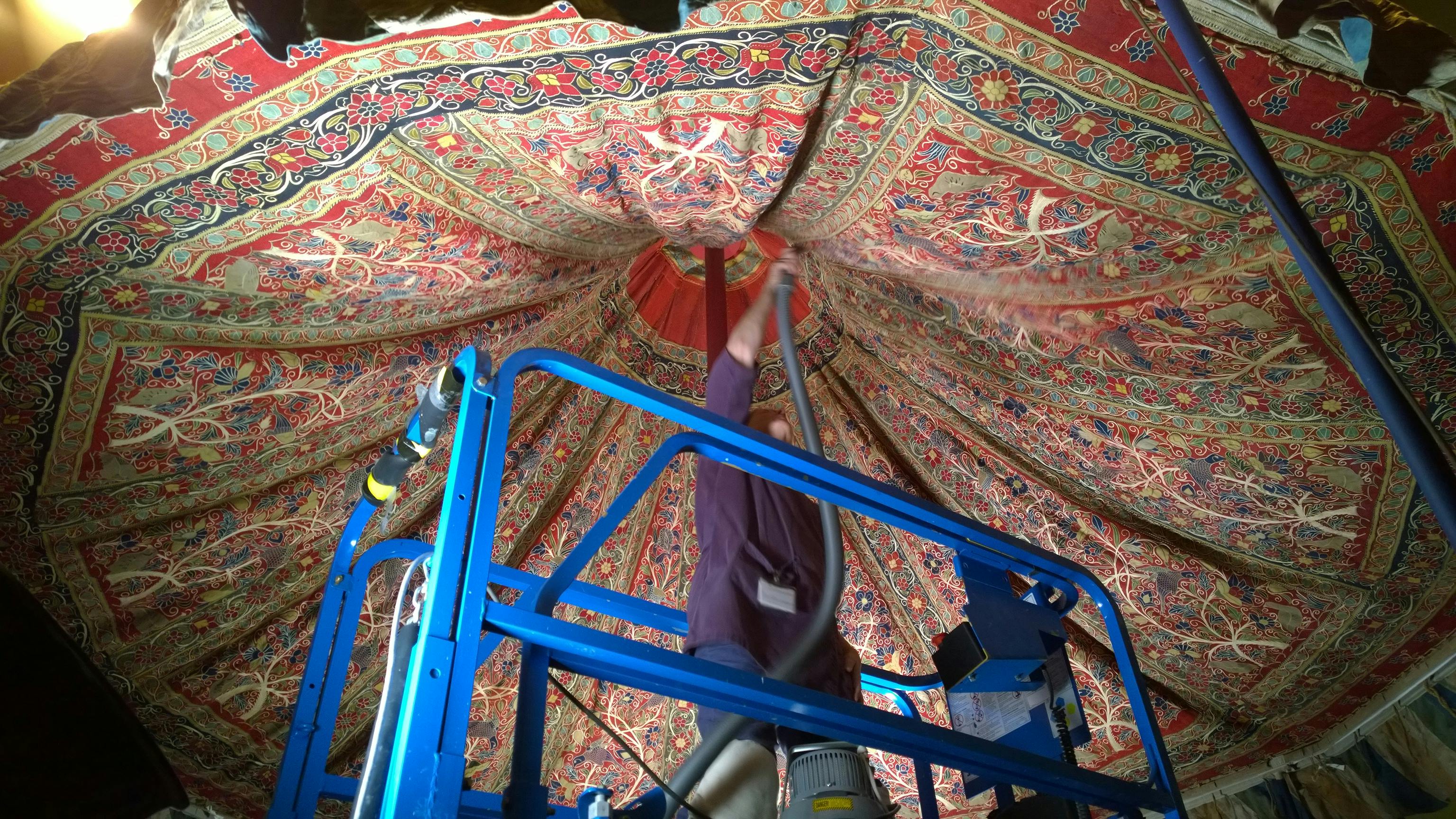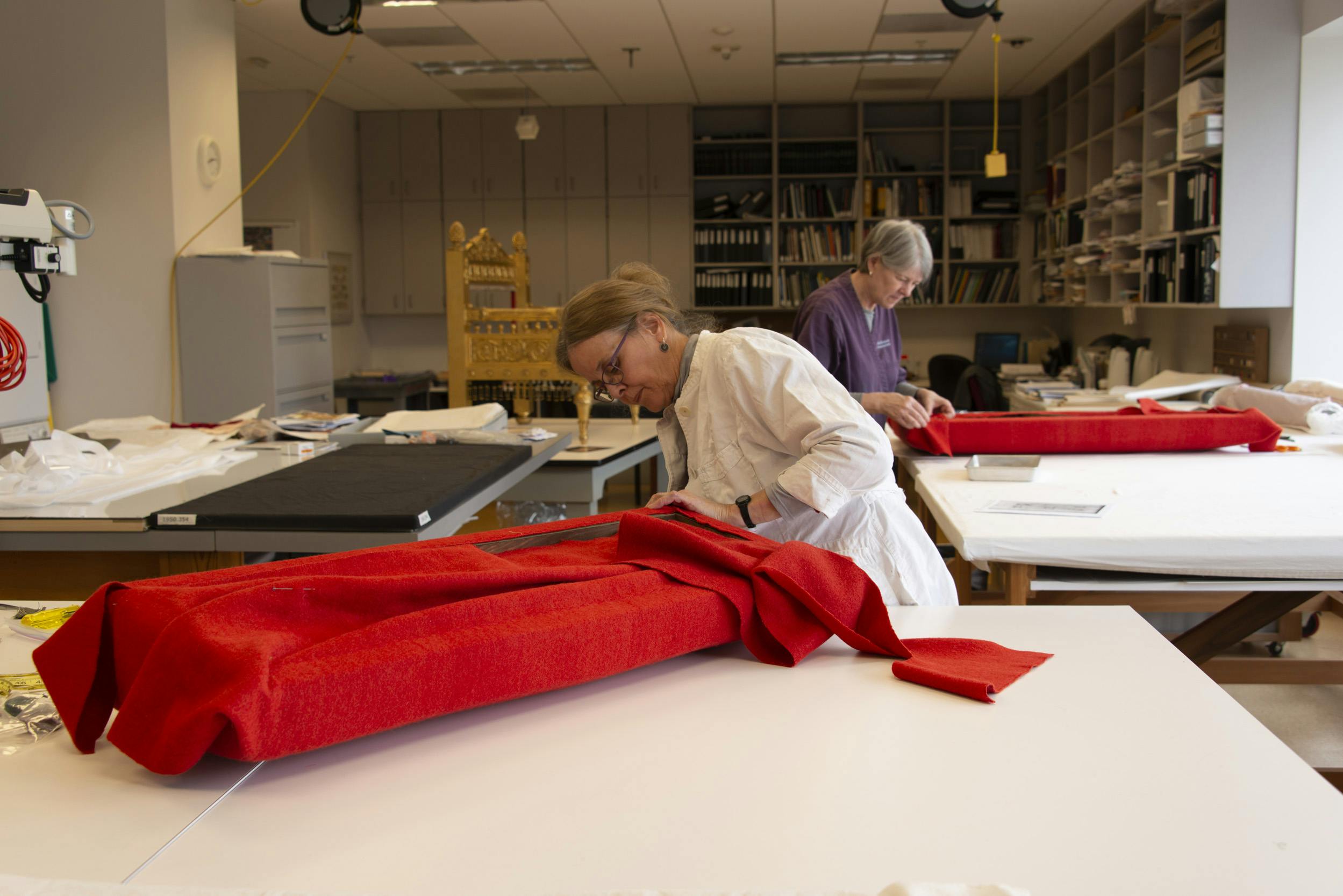Textile Conservation Lab

Textile conservators at the Cleveland Museum of Art preserve, store, treat, analyze, and mount textiles for display. Textiles are a vibrant part of the CMA’s collection; the first formally accessioned object in the collection, an embroidered collar, was a textile. Today, the CMA’s textile collection numbers between 4,500 and 5,000 textiles and features examples from countries and cultures around the world. It mirrors the museum’s collection overall in its encyclopedic nature and ranges from Egyptian mummy linen to contemporary fiber art. There are textiles on display in 17 galleries across the museum as well as in special exhibitions.
In the 1,000-square-foot textile conservation lab, conservator Robin Hanson also serves as a reference point for curators on the textile collection. With her 24 years of experience at the CMA, her knowledge of the CMA’s textile collection is broad.
The textile conservation lab frequently teaches and mentors the next generation of conservators and art historians.
How to Conserve a Tapestry
Featured Projects
Internal Conservation Collaborations
Collaboration and problem-solving are key components of conservation; these qualities are exemplified in the textile conservation lab. In any given week, the textile lab may install a large contemporary fiber art flower screen, fit a garment on a mannequin such as the Panamanian mola, vacuum the inside of a Qajar tent, or mount a sixth-century Egyptian Coptic textile so it can be hung on the gallery walls for display. All these activities require teamwork with colleagues throughout the museum—including curators, mount makers and art handlers—as well as fellow conservators in other specialties.

Conservator of textiles, Robin Hanson, vacuuming the inside of a Qajar tent.
External Conservation Collaborations
Collaborations extend beyond internal ones. In 2018 and 2019, textile conservator Robin Hanson collaborated with then–Metropolitan Museum of Art upholstery conservator Nancy Britton to reupholster two pieces of Thomas Hope furniture—the CMA’s settee, which can be seen in gallery 203B, and the Met’s bench, which can be seen in its British galleries. Kate Smith at Eaton Hill Textile Works in Marshfield, Vermont, was the third collaborator for this project; she wove the period-appropriate twill-weave wool textile and dyed it the appropriate red color for both museums’ reupholstery needs.

Metropolitan Museum of Art upholstery conservator Nancy Britton working with CMA textile conservator Robin Hanson.